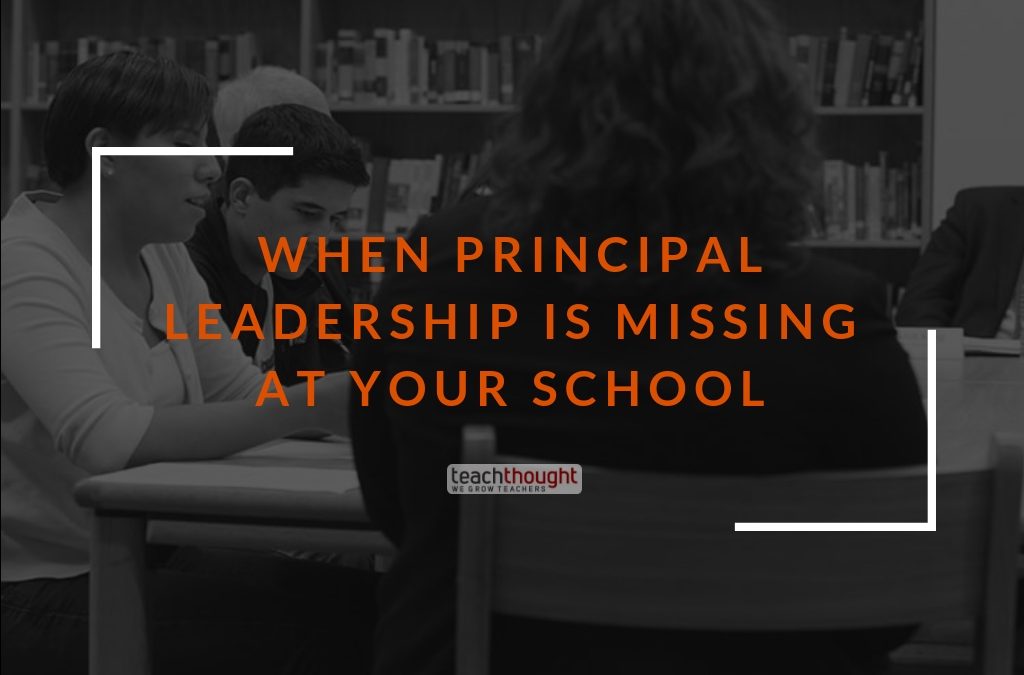
When Principal Leadership Is Missing At Your School
contributed by Tamara Fyke
A few years ago, while working with the Center for Safe & Supportive Schools at Vanderbilt University, there was a question I frequently received from teachers: “What do I do if my principal isn’t leading?”
If this is the case in your school, there could be a variety of reasons or some combination of factors. Perhaps the principal is young, new, absent, retiring or authoritarian. A young principal may lack confidence. There is a certain amount of wisdom and stability that only comes with experience. Likewise, a new principal may feel unsure about the dynamics of the school and how to get started.
An absent principal, one who continually hides in the office or leaves the building for meetings, may not be best suited for this leadership role. A retiring principalmay check out emotionally even before the official day. An authoritarian principal may think fear is the best motivator. All of these scenarios can make it difficult for teachers to stay motivated and focused with the students. So, what can you do if your principal isn’t leading?
Firstly, you need to take care of yourself personally. You cannot do your job of teaching students if you are neglecting yourself. Consider your physical and emotional health. Are you eating and sleeping well? Are you exercising regularly? If not, think about the changes in your routine that need to be made. How are you feeling emotionally? Name what you are feeling. Whether it is calm, angry, depressed, or resigned, it is important to put a label on what you are feeling so you can deal with it. If you are having difficulty identifying your emotions, perhaps it would be helpful to talk with a friend or journal about your experiences.
Professionally, remember to keep a positive attitude and use encouraging language. Yes, you may share your frustrations with your colleagues. However, say it in a way that reframes instead of blames. For example, if you are serving under a new principal who has not communicated a vision for the school, you may feel like saying “This new leader has no idea what he’s doing.” Instead, you could say, “Our leader is learning. I wonder what we can do to help establish a vision for our school. Perhaps I’ll ask him if he’d like help leading a discussion about our vision and mission statements.” One statement attacks; the other helps.
Keeping a positive attitude and using encouraging language is a way to honor your leader. Whether you agree with everything he says or not, he is the leader. Your job is to help him fulfill his purpose at the school. You can do this by showing up for your students, both physically and emotionally. Come to work. Be on time. Be present with your colleagues and students. This is easier said than done when you are working with an undesirable principal. However, that is why you are called a professional. Do your best…for the sake of the children. And, as your mother used to say, “If you don’t have anything nice to say then don’t say it at all”. Schools are famous for being gossip mills, but you don’t have to participate. Hold your tongue. It is not your place to point out your leader’s mistakes. You are there to get a job done…do it.
Your job is to teach your students. Stay focused on them. Remember why you got into teaching in the first place. You wanted to make a difference in the lives of children. You can do that even if your principal is not ideal. Create opportunities to connect with your students through stories, projects and events. You can model strong leadership and healthy communication in your classroom even if there are problems with school climate. The challenge is not to isolate yourself and your students.
You need to stay connected with your colleagues, those on your grade level team and those throughout the building. Chances are that you are not alone in your experience and perception. Take time to hear others’ concerns. Listen well, but set a time limit. You don’t need to get caught in an hour-long negative conversation. Again, be sure that what you say to your colleagues about your leader is reframed positively. As with your students, create opportunities to connect with your fellow teachers. Perhaps, you can host a potluck lunch, night out after work, or secret pals. Find ways to build camaraderie and bolster spirits.
When faced with a poor leadership situation, you have a choice to make. No, you can’t single-handedly fix the situation…that burden falls to your principal. However, you can choose to do what only you can do. You can use your professionalism and positive attitude to influence your schools, your peers, and your leaders to move in the right direction. Use your power for good. Make a difference where you are by staying focused on why you do what you do…helping children grow and learn.
Tamara Fyke (@entrprenurgirl) is a creative educator and entrepreneur with a passion for kids, families, and urban communities, and is the creator/author and brand manager for the Love In A Big World social-emotional learning and character education curriculum. She received her master’s degree in education from Peabody at Vanderbilt. Tamara lives in Nashville with her three amazing children she adopted.